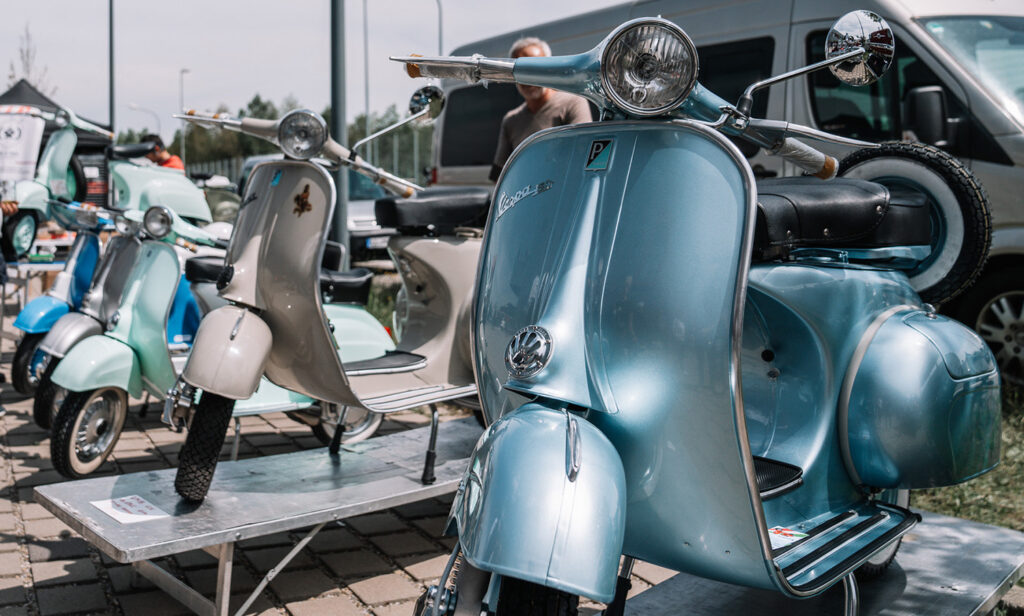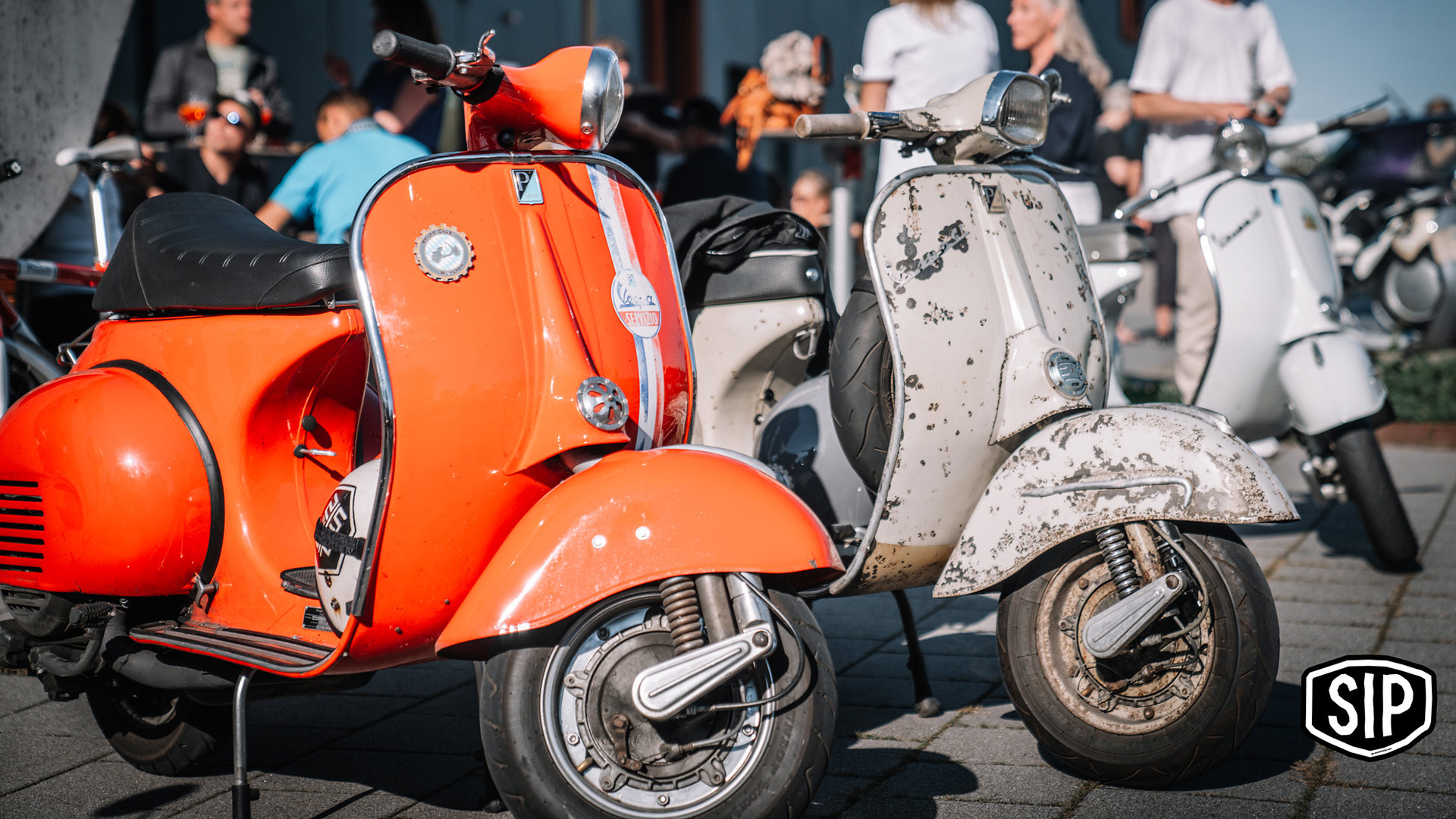What can be done if the appearance of the Vespa no longer appeals?
Assuming that the choice of color for our two-wheeler is a purely subjective decision, we have to accept it: Whatever we choose, it will polarize and divide the Vespisti community. Some people will like our color, others will not. But it shouldn’t stop anyone from choosing their favorite color!
What’s more, the factory paintwork of a rather rare Vespa scooter is much more coveted by collectors than a newly painted scooter. And that despite any damage, rust spots and patina. Nevertheless, a new paint job is decided. One of the first thoughts that comes to mind:
How much does it cost to repaint a Vespa?
That depends on various factors and the prices charged by the specialists.
A major influence on the costs will be whether we can do the partial dismantling of the scooter on our own or whether the painter has to do it himself or organize it. Do we even have suitable, dust-free and dry space and the necessary accessories to carry out a DIY paint job?
It also matters whether the roller has already been sanded and only the paint needs to be applied. In this case, you can expect to pay around €200 for the specialist workshop. If the sanding is also carried out by a specialist, it can go up to €500.

Color systems for the right choice of color
The image of a long code appears in our mind’s eye. Research on the Internet tells us that this is the Max Meyer code. It is also said to be an 8-digit code in which the last three digits relate to the color.
Apart from this, there is also the RAL colour system, which is used worldwide and contains a range of standardized colors. This system is now somewhat more widespread among painters, as it is more standardized. There is also a very practical RAL Classic color chart for this system, as the printed colors come closer to the actual end result.
What does that mean in plain language?
In contrast to the very different color palettes of the paint suppliers, RAL colors are always the same color.
You are unlikely to find the color code for original Piaggio paints valid for your scooter in the vehicle documents. Look next to the chassis number or the tank. Alternatively, the code may also be located in the helmet compartment.
We already mentioned at the beginning that the choice of color is a purely subjective matter. For this reason – but mainly for reasons of space – it is not possible for us to reproduce the extensive tables here.
Popular Max Meyer Colorcode







Some colors from the RAL-Index







The problem with both color systems is that they cannot necessarily be compared with each other. This means that a color in the MMC is not exactly identical to the RAL color. If necessary, you could have shades mixed to the desired color, but of course this is all a question of cost. It should also be noted that the digital representation of the colors may differ slightly from the physical color effect.
How much paint is needed to repaint the Vespa?
The quantities given should be regarded as an estimate, as it always depends on the nature of the paint and its viscosity. For a smallframe, approx. 1 liter of paint is required for an even finish. For a largeframe, you should reckon with approx. 1.5 liters.
It’s definitely worth getting a little more paint, after all, you want the paint to be as rich and smooth as possible. After all, half a result is not very attractive in the end.
What tools/accessories do I need for painting?
- A delta- or eccentric sander for working on larger surfaces
- for sensitive surfaces, sandpaper, starting coarser and gradually getting finer
- the paint, thinner and hardener
- paint tray/paint bucket
- a suitable workplace, clean and as dust-free as possible
- suitable standard tools for dismantling the roller into parts
- masking material to cover areas where no paint is to be applied
- Protective suit, preferably a full body suit
- Protective gloves
- Breathing mask
- Ideally a compressor and spray gun
Prepare everything you need before starting work. Setting up the workplace correctly saves time and patience in the end.
Extra tip:
To prevent sanding dust from settling on the new paint, use wet sandpaper and keep tapping and vacuuming in between.
Ideal procedure for the most common case where the paint needs to be completely removed:
- first rough sanding with 40 to 80 grit sandpaper
- followed by intermediate sanding with 80 to 120 grit sandpaper
- Finally, the finest sandpaper with 240 to 320 grit
If you don’t want to do all the work or don’t have the confidence to do it, find a paint store you trust. It is best to obtain and compare various offers.
We wish you good luck!



